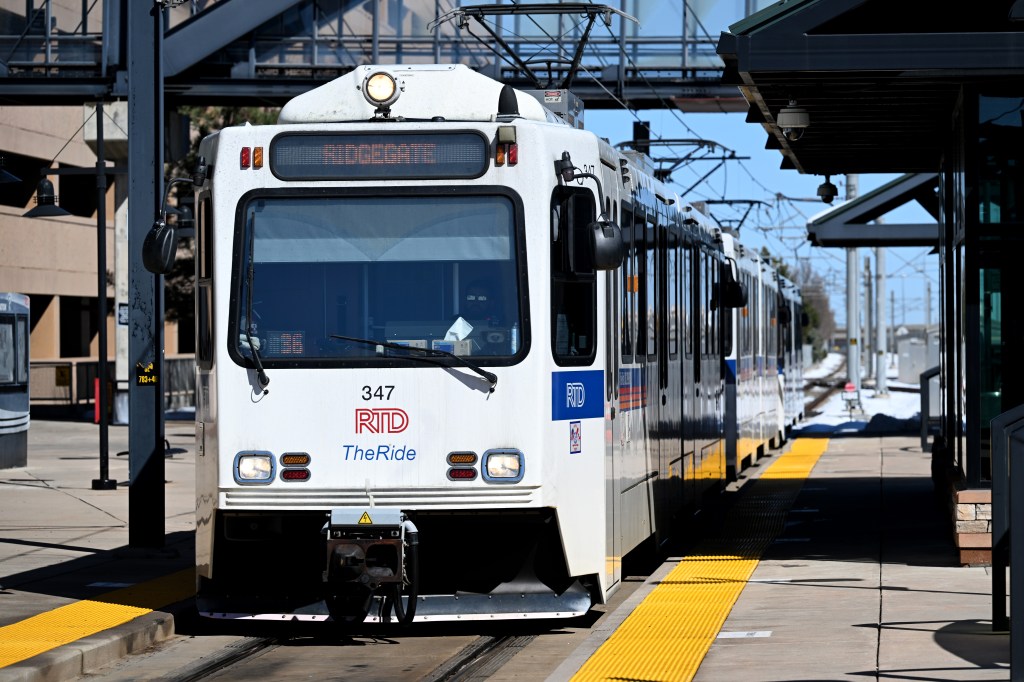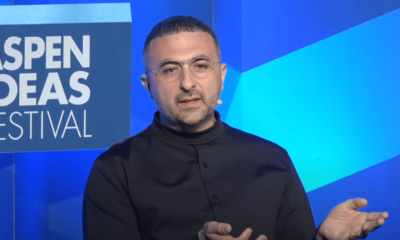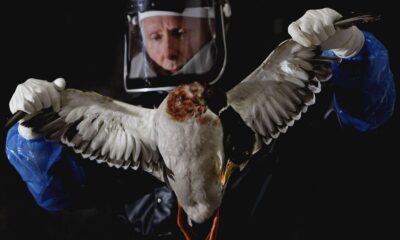World News
RTD riders face disruptions as rail safety inspectors discover more problems

RTD Public transport passengers are facing increasing disruptions, with delays of up to 45 minutes being added to already turtle-like light rail traffic, after safety inspectors discovered problems on tracks that forced trains to crawl through newly designated ‘delay zones’.
It can take two hours to travel on RTD trains from downtown Denver through the southeast corridor along Interstate 25.
Metro Denver residents who rely on buses this week will have to navigate multiple station closures downtown due to construction. The elevators at RTD’s Nine Mile Station and 38th/Blake Station were declared “inoperable due to mechanical issues,” forcing train and bus passengers in need of lifts to seek temporary shuttles. Portions of RTD’s A Line rail line between Union Station and Denver International Airport were also inspected, RTD officials said, requiring buses between downtown and Central Park. An important cross-metro bus trip was canceled Monday morning because no driver was available.
These latest disruptions are in addition to summer delays that began last month to accommodate a maintenance catch-up in downtown and, separately, along the I-25 corridor tracks connecting downtown to the Denver Tech Center and the southern suburbs. Even when car traffic is heavy, drivers can usually get between the DTC and the city center within 45 minutes.
RTD communications officers were not available to discuss the disruptions directly and did not fully respond to emailed questions. The agency issued statements Monday afternoon saying officials had imposed “speed restrictions,” establishing slowdown zones along the E, H and R lines, “depending on the severity of what was encountered.” RTD officials did not specify what inspectors found. The “additional delays” of up to 45 minutes will continue indefinitely.
“The southeast light rail corridor remains safe for RTD to continue running trains. If at any time the track was not safe for operations, light rail services would immediately cease,” the statement said.
Chris Fawver, a 42-year-old Denver resident who is struggling to adjust to service cuts in May that reduced train frequency along southeastern routes to one train per hour, arrived unexpectedly late at his destination.
“Totally unfair,” said Fawver, who does not own a car. Although he was delayed Monday, he used RTD’s app and called customer service to reach agents who assured him the trains would arrive within minutes. They didn’t. He had to wait.
His commute from just south of downtown (10th/Osage Station), starting at 7:05 a.m., normally takes 40 minutes to reach Lincoln Station in the south suburb. On Monday, Fawver clocked the time at just over two hours.
The train he caught was crawling at a speed of 7 to 10 miles per hour, he estimated, slowest “on the elevated tracks,” he said.
“It seems like RTD is doing everything at the same time and it’s a huge inconvenience for anyone trying to commute. This can easily affect someone’s employment situation. It is understandable that there would be delays due to the work they do. But to reduce that to one train per hour, and then add 45 minutes on top of that? They need to spread the word, or at least be more transparent with the public.”
Leaders of the grassroots advocacy group Greater Denver Transit argue that poor service could cause a downward spiral in ridership.
“When transit routes that are already slower than the car take two or three times as long to complete. …..riders with other options will choose those options and many will not come back to RTD,” said James Flattum, co-founder of GDT. “The longer this period of unreliable service continues, the more riders will choose not to return to RTD.”
On Tuesday afternoon, RTD publicists released an announcement saying that metro Denver residents who paid for RTD transportation, instead of riding RTD trains, could ride Colorado Department of Transportation Bustang buses from Union Station in the center to Bustang Sky Ridge Station.
RTD’s recent online “service alerts” showed multiple disruptions, including the following:
– The 15L bus that runs along Colfax Avenue between Decatur/Federal Station and Aurora Monday morning was canceled “due to no operator being available”
– Elevators at RTD’s Nine Mile Station and at the 38th/Blake Station were down, necessitating the use of shuttle buses, with no service expected to be restored
– Downtown bus stop closures include those at Market Street and 14th and 16th Streets
– Light rail trains on the E line were delayed up to 45 minutes at speeds of up to 16 km/h “due to track inspections,” according to a service warning. Trains once ran along this route with a frequency of 15 minutes
“There is a significant portion of RTD’s infrastructure that is not in good condition,” said Chris Nicholson, a candidate seeking a seat on RTD’s board of directors. “More than previously recognized,” he said. “We can’t keep disappointing people.”
Rival RTD board candidate Bob Dinegar noted the disruptions, but added that he is optimistic that “our future will be bright once the short-term pain we experience during RTD’s much-needed downtown track maintenance turns into the pleasure of experiencing of the excitement of a revived 16th century railway centre. Street shopping center.”
RTD statements said “preventive” inspections are conducted four times a year on all 120 miles of rail line and that inspectors in the southeastern metro area began their work in May. They examined the light rail track, crushed rocks around it, clips holding the rails in place and overhead wiring.
Agency officials did not reveal how many deceleration zones have been established or where. However, rail lines between the Colorado and Southmoor stations and other southeastern routes “will experience additional delays due to the track inspections” and train speeds will be “slower through the affected areas,” the statement said.
“Resumption of normal speeds will depend on how quickly repairs are carried out. The timeline for completing the isolated repairs will depend on the severity of the problem discovered and the availability of maintenance personnel.”
In March, RTD officials unveiled plans to suspend downtown L Line trains running to and from Five Points during a $152 million maintenance blitz — part of a “corrective action plan” presented to Colorado safety regulators Public Utilities Commission after inspectors discovered corrosion of the tracks downtown. Downtown riders and drivers will experience varying blockages at five excavated intersections: 17th and California, 15th and California, 17th and Stout, 15th and Stout, and Broadway and Welton. RTD officials have rerouted D and H Line trains from their usual stops to Denver’s Union Station. A separate maintenance project to repair walls along the E line has resulted in train frequencies being reduced from once every 15 minutes to one train per hour.
RTD ridership is down to about 65 million boarders in 2023, down from 105.8 million in 2019. Colorado leaders have said better bus and rail services are crucial to meeting the state’s climate, environmental and affordable housing goals reaches.
Get more Colorado news by signing up for our daily Your Morning Dozen email newsletter.













